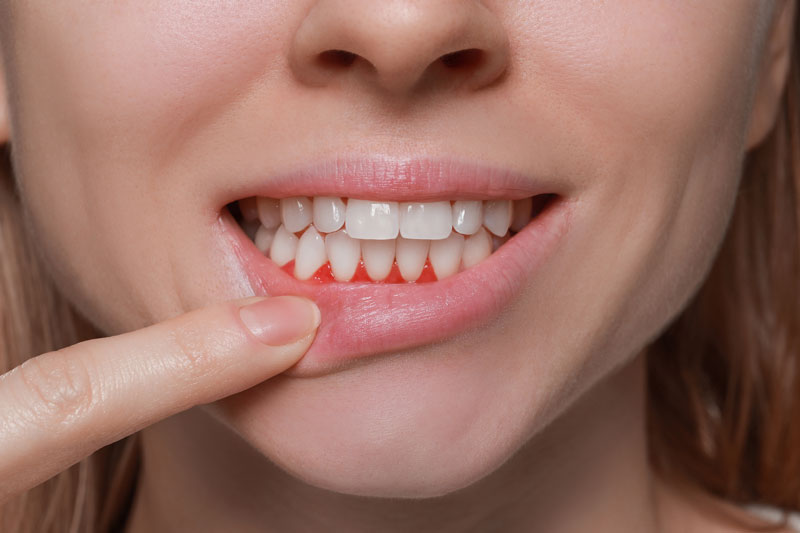Gum recession is a common problem, where gum tissue gradually pulls away from your teeth, eventually exposing tooth roots. Consequently, teeth can look longer, and it is often considered a sign of aging, hence the term “long in the tooth.”
However, receding gums can cause problems. If you have noticed your gums pulling away from your teeth, it’s worth seeing a dentist at West Bowmanville Family Dental. We can diagnose the cause and provide suitable treatments.
What Can Cause Receding Gums?
Receding gums in Newcastle can occur for a variety of reasons. Sometimes, the reason is genetic as some people have naturally thinner gum tissue. Other times, it can be caused by brushing your teeth very hard, especially if you use a hard-bristled toothbrush.
Other potential causes include hormonal changes during puberty, pregnancy and menopause. These changes can increase gum sensitivity, so they bleed more frequently.
Often, the problem is due to gum disease in Clarington, which is a problem that is often due to poor oral hygiene.
What Is Gum Disease?
Gum disease is a bacterial infection that can destroy gum tissue and eventually will move on to destroying other structures around your teeth, including your jawbone. Advanced gum disease, called periodontitis in Courtice, is a common cause of tooth loss.
What Can Cause Gum Disease?
The bacteria that cause gum disease are found in dental plaque, a sticky film that is continually building up over your tooth surfaces. Everybody has dental plaque, but if you have good oral care, you will remove most of it when you brush and floss your teeth.
Problems can occur if you fail to brush and floss regularly, letting plaque build up over your teeth. It doesn’t take long for plaque to harden into calculus or tartar, which can only be removed during a professional dental cleaning. Tartar builds up around the gumline, making it easier for more dental plaque to stick to your teeth.
The Good News Is Gum Disease Is Preventable
Gum disease is harmful, but you can prevent it with a proper oral care routine. When you first visit our dental practice, we assess your risk for gum disease and can provide you with a custom preventive dental care plan.
Your dental care plan will outline how to maintain strong, healthy, disease-free gums. It will include how frequently we recommend professional dental exams and hygiene appointments.
The Importance of Regular Dental Exams and Hygiene Appointments
Professional preventive dentistry is essential for good oral health. During each dental exam, we can monitor your gum health closely and detect any changes, such as receding gums.
We monitor your gum health by taking detailed measurements of the gap between each gum and tooth. These gaps shouldn’t be any deeper than 3 mm. If they are bigger, you could have periodontal pockets, a sign of gum disease.
What Happens If I Have Signs of Gum Disease?
If we detect any changes to your gum health, we can provide prompt treatment, possibly before you notice any symptoms such as significant gum recession or gums that bleed frequently or feel painful or tender to touch.
Treatment for early gum disease, called gingivitis, could be as simple as cleaning your teeth professionally. By eliminating all plaque and tartar buildup, we can get rid of the harmful bacteria that cause infection and inflammation, providing you with a good foundation on which to begin caring for your teeth and gums at home.
Our dental hygiene team can provide useful information on improving your oral care routine at home, helping restore good gum health.


